Lecture 7: Archaic to Classical Greece
1/20
There's no tags or description
Looks like no tags are added yet.
Name | Mastery | Learn | Test | Matching | Spaced |
|---|
No study sessions yet.
21 Terms
Megaron
Columnar porch, vestibule (lobby), throne room (open to ceiling in the center), supported by 4 columns
Peristyle
Line of columns inclosing a space
Pronaos
“Before the sacred space”
Cella
The inner chamber of a classical temple, especially a Greek or Roman one, which houses the cult statue of the deity
Adyton
Sacred chamber with restricted access
Post and lintel construction
Series of posts supporting horizontal element (lintel)
Doric orders
Columns are stout
Have no base
Feature a simple, plain capital with a rounded echinus and square abacus
Ionic orders
Slender columns
Sit on a base
Distinctive scroll-like volutes on their capitals
Entablature
Sits on top of column
Triglyph
Vertical striations
Metope
Located between the triglyphs, often decorated with relief sculptures
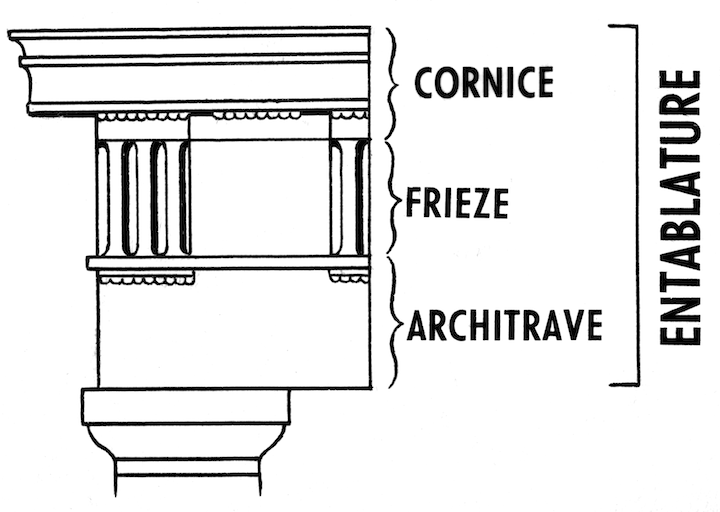
Continuous frieze
A continuous band of relief sculpture or painting, often used in architecture, that depicts a single, unfolding story or scene rather than being broken into separate panels
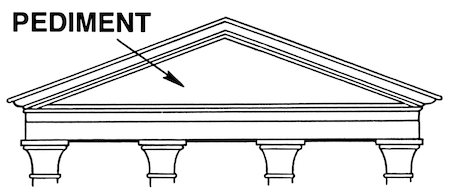
Pediment
A triangular or ornamental shape formed by the sloping gables of a roof or a decorative element that crowns a structure's facade, often found above a building's entrance or a smaller doorway or window
Orientalizing
Early Greek art began borrowing ideas, patterns, and symbols from Eastern cultures, such as animals, floral designs, and mythological creatures
Gigantomachy
War of humans against giants
Kouros/Kore
Youth/young boy
Contrapposto
Contrary/against (movement comes from here)
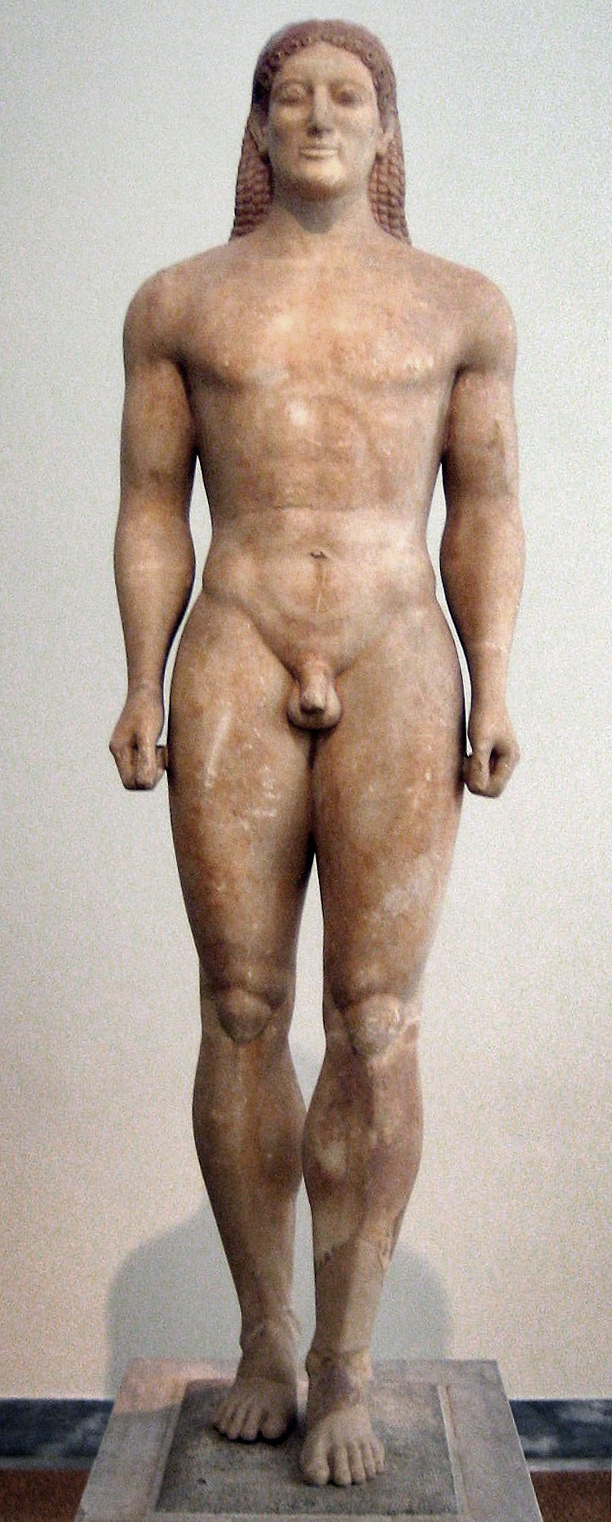
Kouros from Anavysos
The piece is less abstract and he has an archaic smile. The smile was meant to show life instead of emotions. He is posing rigidly and this shows the Greek’s interest in idealized youth. The anatomy is of a naturalistic style.
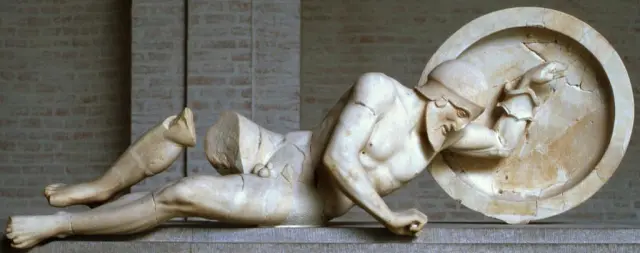
Dying Warrior from West Pediment of Temple of Aphaia
The warrior has an archaic smile although he’s been stabbed. He is both heroic and vulnerable. This represents the Greeks interest in balancing idealized forms with realistic depictions. With him lowering his head and twisting his body, it’s a more naturalistic movement.
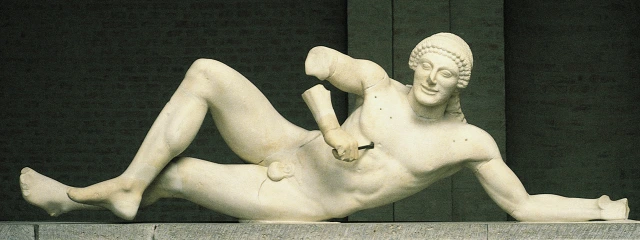
Dying Warrior from East Pediment of Temple of Aphaia
The warrior is airborne and braces himself. There is no pain on his face and he appears contemplative. There is movement away from the archaic smile to realism. The piece is showing him as he’s falling.
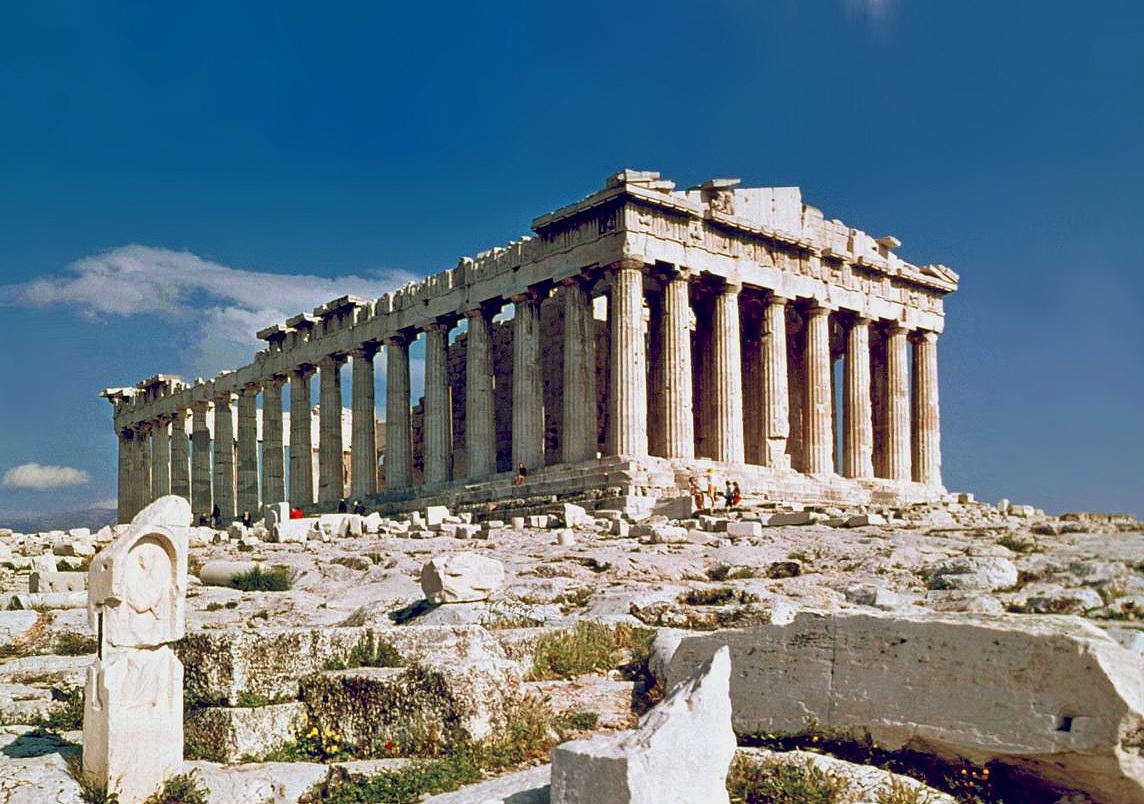
Parthenon
It was a monument to the greatness of Athens and Pericles. It was meant to be seen by Athenians and their subject allies. It took 15 years total to build. The order is doric with ionic elements. It was made with the design of optical refinements.